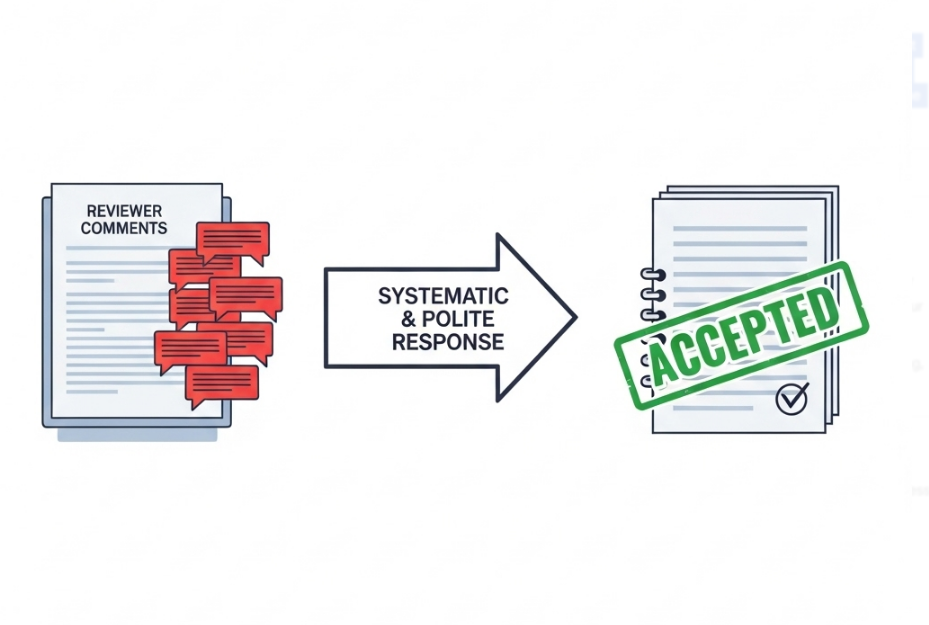

224 views||Release time: Sep 24, 2025
You've received the decision on your manuscript: "Revisions Required." First of all, congratulations! This is not a rejection; it is an invitation to improve your paper and a strong signal that the editor is interested in your work.

Your next task is to write a compelling rebuttal letter, also known as the "Response to Reviewers." This document is your systematic, point-by-point explanation of how you have addressed the feedback from the editor and reviewers. A thoughtful, respectful, and thorough rebuttal is often the deciding factor in achieving final acceptance.
This guide provides the strategy, structure, and templates you need to craft a response that will win over your editor and reviewers.
Your tone and approach are just as important as the changes you make to the manuscript.
Be Grateful, Not Defensive: Begin by thanking the editor and reviewers for their time, effort, and constructive feedback. Acknowledge that their comments have helped you strengthen the paper. This sets a collaborative and professional tone.
Be Systematic and Organized: Address every single comment in a point-by-point format. Copy and paste each reviewer comment and write your response directly below it. This makes it easy for the editor and reviewers to see exactly how you've handled their concerns.
Answer Every Point: Do not ignore any comment, no matter how small or seemingly irrelevant. Skipping a point can be interpreted as dismissive. If a comment is unclear, state your interpretation and address that.
Make Substantial Changes: The goal is to improve the paper, not just to defend it. Your letter should be a summary of the actions you have taken. Use phrases like, "We have revised this section..." or "We have now included a new figure to clarify this point..."
Structure your document for maximum clarity and impact.
The Opening Statement: Begin with a polite paragraph addressed to the editor. Thank them for the opportunity to revise and state your enthusiasm for resubmitting the improved manuscript.
A Summary of Major Revisions: At the beginning of your response, it's helpful to include a brief, bulleted list of the most significant changes you have made. This gives the editor a quick overview of your efforts.
The Point-by-Point Response: This is the core of your document. For each reviewer (e.g., Reviewer 1, Reviewer 2), follow this structure for every comment:
Restate the Reviewer's Comment: Copy the full comment verbatim. Use formatting (like bold or italics) to make it stand out.
Provide Your Response: Start by thanking the reviewer for their suggestion. Clearly and concisely explain the change you made.
Show the Evidence: Quote the revised text from your manuscript and, most importantly, provide the exact location of the change (e.g., "Page 5, Paragraph 2, Lines 10-15").
How to Handle Disagreements Politely: Sometimes, you may disagree with a reviewer's suggestion. Do not simply say, "The reviewer is wrong." Instead, use a respectful and evidence-based approach:
Thank the reviewer for their point.
Acknowledge the validity of their perspective.
Clearly and respectfully explain your scientific reasoning for why you chose not to make the change.
Support your position with evidence, such as citing other key papers or referencing your own data.
The Closing Statement: End with a final paragraph reiterating your thanks and expressing your hope that the revised manuscript is now suitable for publication.
Date: September 24, 2025
To: Dr. [Editor's Full Name], Editor-in-Chief, [Journal Name]
Re: Response to Reviewers for Manuscript ID #[Your Manuscript ID] Title: "[Your Manuscript Title]"
Dear Dr. [Editor's Last Name],
Thank you for the opportunity to revise and resubmit our manuscript. We are grateful to you and the reviewers for the insightful and constructive comments. We have found the feedback immensely helpful and believe the revisions have significantly strengthened our paper.
We have addressed all the comments in detail and have enclosed a point-by-point response below. The major revisions include:
[Example: A new set of experiments to validate our initial findings.]
[Example: A more thorough discussion of the study's limitations.]
[Example: Clarification of our statistical methodology.]
We hope that the revised manuscript is now suitable for publication in [Journal Name].
Sincerely, [Your Name] [Corresponding Author, Your Affiliation]
Response to Reviewer 1:
Reviewer 1, Comment 1: "[Copy the reviewer's full comment here.]"
Our Response: We thank the reviewer for this excellent suggestion. We agree that this point required further clarification. We have revised the text to address this, and the changes can be found on Page X, Paragraph Y, Lines Z-Z. The revised text now reads:
"[Quote the new, revised sentences from your manuscript here.]"
Reviewer 1, Comment 2: "[Copy the reviewer's full comment here.]"
Our Response: We appreciate the reviewer's concern regarding this point. While we agree that [acknowledge their perspective], our methodological approach was chosen because [provide your scientific reasoning, supported by evidence or citations]. We have added a sentence to the manuscript on Page A, Paragraph B to clarify this rationale for the reader.